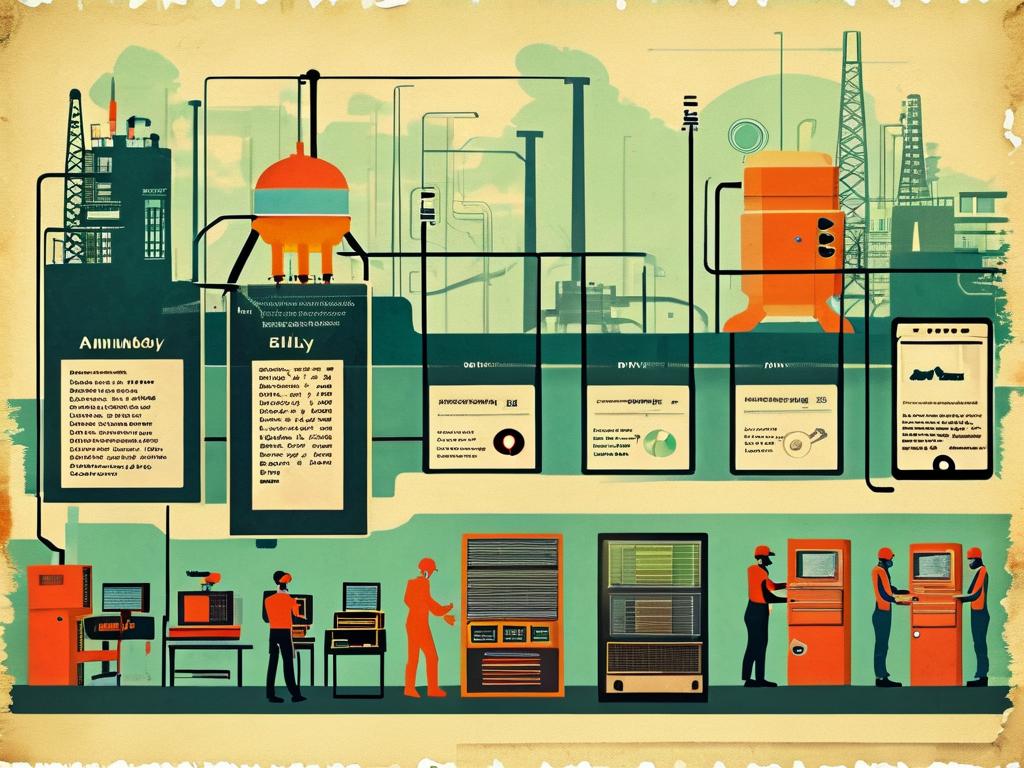In today's fast-paced digital landscape, enterprises face mounting pressure to deliver software updates rapidly and reliably. Automated deployment has emerged as a game-changer, enabling organizations to streamline their release processes and enhance operational efficiency. At its core, automated deployment involves using scripts and tools to push code changes to production environments without manual intervention, minimizing human error and accelerating time-to-market. For businesses, this shift is not just a trend but a strategic necessity to stay competitive in an era where agility defines success.

The journey to implementing automated deployment in an enterprise setting begins with a clear understanding of its benefits. By automating repetitive tasks like testing, building, and releasing applications, companies can slash deployment times from hours to minutes. This efficiency translates to reduced downtime, lower operational costs, and improved customer satisfaction. For instance, a retail giant deploying e-commerce updates manually might face hours of outage during peak sales; automation ensures seamless, off-peak rollouts. Moreover, it fosters a culture of continuous integration and continuous delivery (CI/CD), where teams collaborate more effectively across development, testing, and operations silos. However, the path isn't without hurdles. Enterprises often grapple with legacy systems, resistance to change, and the initial investment in tools and training. Addressing these requires a phased approach, starting with small pilot projects to demonstrate quick wins and build stakeholder buy-in.
To embark on this transformation, enterprises should adopt a structured methodology. First, assess current workflows to identify bottlenecks—such as manual testing or approval delays—that automation can resolve. Next, select appropriate tools tailored to the organization's tech stack. Popular choices include Jenkins for orchestration, Docker for containerization, and Kubernetes for scaling. For example, a simple Jenkins pipeline script can automate the build and deployment stages, reducing errors. Here's a basic code snippet for a Jenkinsfile:
pipeline {
agent any
stages {
stage('Build') {
steps {
sh 'mvn clean package'
}
}
stage('Test') {
steps {
sh 'mvn test'
}
}
stage('Deploy') {
steps {
sh 'kubectl apply -f deployment.yaml'
}
}
}
}
This script automates the entire process from compiling code to deploying it in a Kubernetes cluster, ensuring consistency across environments. Integrating such tools requires collaboration between DevOps teams and developers to define infrastructure-as-code practices, where configurations are version-controlled and reproducible. Security is paramount; incorporate automated scans for vulnerabilities during deployment to mitigate risks. Additionally, monitoring tools like Prometheus or Grafana should track performance post-deployment, enabling quick rollbacks if issues arise. Training staff is crucial—offer workshops on new technologies to bridge skill gaps and foster a DevOps mindset.
The advantages of automated deployment extend beyond technical gains. It empowers enterprises to innovate faster, releasing features multiple times a day instead of monthly. This agility is vital in sectors like finance or healthcare, where regulatory compliance demands rapid updates. For example, a bank automating its deployment pipeline can swiftly patch security flaws, avoiding costly breaches. Cost savings are significant too; by reducing manual labor, businesses reallocate resources to innovation rather than maintenance. Studies show that companies adopting automation see a 50% drop in deployment failures and a 30% boost in developer productivity. Yet, challenges persist, such as ensuring cultural adoption. Leaders must champion this shift, emphasizing how automation frees employees for higher-value tasks, rather than replacing jobs.
Best practices are essential for sustainable implementation. Start small with non-critical applications to build confidence, then scale to core systems. Embrace a "shift-left" approach, integrating testing early in the pipeline to catch defects sooner. Regularly review and optimize the automation workflow, using metrics like deployment frequency and lead time to measure success. Also, prioritize resilience by designing fallback mechanisms, such as blue-green deployments, where new versions run alongside old ones for seamless transitions. Collaboration tools like Slack or Jira can enhance communication, ensuring all teams align on deployment goals. As technology evolves, stay updated on trends like AI-driven automation for predictive analytics, which can further refine processes.
In , automated deployment is a cornerstone of modern enterprise agility, transforming how businesses operate and compete. By methodically implementing it with the right tools and mindset, organizations unlock unprecedented efficiency and innovation. The journey demands commitment but pays off in resilience and growth, positioning enterprises to thrive in an ever-evolving digital world. Embrace automation today to build a future-ready foundation.









